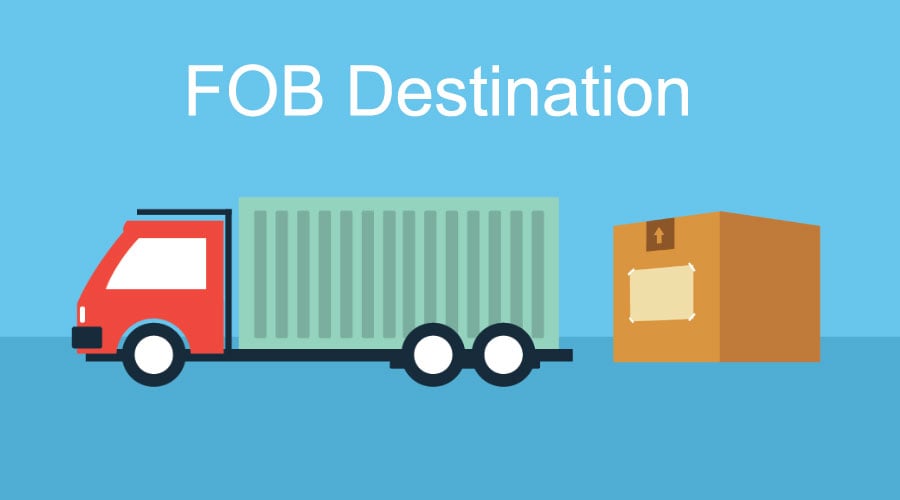If you’ve ever sourced products from overseas — especially from China — chances are you’ve come across the term FOB on your supplier’s quotation sheet. But what exactly does FOB price mean? How is it calculated? And how does it compare to CIF or other international shipping terms?
This article breaks down the full FOB meaning, explains how it works in real-world trade, and helps you decide whether FOB or CIF is right for your business.
1. FOB Meaning in International Trade
FOB stands for Free on Board, a trade term defined under Incoterms (International Commercial Terms), and it’s one of the most commonly used shipping terms in global trade.
So, what is FOB price?
The FOB price refers to the cost of the goods plus all expenses needed to deliver the goods to the port of shipment — including local transport, export packaging, and customs clearance in the seller’s country.
FOB price meaning: You (the buyer) take over responsibility and cost once the goods are loaded onto the ship at the port.
2. What’s Included in FOB Price?
Let’s say you’re buying 500 custom tumblers from a manufacturer in Ningbo, China. If their quote says:
FOB Ningbo: $2.80/unit
It means $2.80 includes:
- The cost of manufacturing
- Inland transport to Ningbo Port
- China-side export documents and customs
- Port loading fees
It does not include:
- Sea freight or air freight to your country
- Insurance
- Import duties or destination-side costs
Once the container is on board the ship, the risk and cost shift to you.
3. FOB vs. CIF: What’s the Difference?
The most frequent question in international sourcing is: FOB or CIF — which is better?
| Term | Full Form | Seller Pays For | Buyer Pays For |
|---|---|---|---|
| FOB | Free on Board | Factory to port + export clearance | Freight, insurance, destination charges |
| CIF | Cost, Insurance, Freight | Everything up to your destination port | Import duty, port handling, final delivery |
✅ When to Choose FOB:
- You want more control over international freight
- You work with a freight forwarder or shipping agent
- You want to compare sea vs. air freight rates
✅ When to Choose CIF:
- You’re new to importing and want a simpler, all-in price
- You don’t want to deal with freight booking
- You’re shipping low-risk, small-volume goods
4. Real Example: FOB in Action
Let’s walk through a real scenario:
You’re buying 2,000 LED lamps from a factory in Shenzhen.
Supplier offers: FOB Shenzhen @ $3.10/unit
You hire a freight forwarder (e.g., GoNest) to handle:
- Sea freight: $380 for 1 CBM (cubic meter)
- Insurance: $25
- Import clearance and local delivery in the U.S.: $120
Total landed cost = FOB unit cost + all shipping charges after FOB
Compared to CIF (which might be quoted as $3.55/unit), FOB allows greater transparency and potential cost savings — especially if you ship regularly or consolidate orders.
5. How GoNest Supports FOB Buyers
If you’re sourcing from platforms like Alibaba, 1688, or Taobao, and suppliers only offer FOB pricing, platforms like GoNest become essential.
What GoNest Offers to FOB Importers:
- Freight booking: Choose air or sea depending on urgency
- Customs clearance & import tax handling (DDP available)
- Door-to-door delivery from China to the U.S., EU, AU, SEA
- Shipping calculator to estimate total post-FOB costs
- Sensitive cargo channels for electronics, branded goods, etc.
With GoNest, even first-time importers can operate with an FOB agreement — and still enjoy full visibility and support from origin to doorstep.
GET IN TOUCH
Let us Send You a Quote
6. FAQs About FOB Price
❓ Is FOB cheaper than CIF?
Not always — CIF can be more predictable for small shipments. But for growing businesses or repeat importers, FOB + third-party shipping is usually more economical.
❓ Can I use FOB for air freight?
Yes. Though “FOB” originally referred to sea freight, in modern trade, it’s loosely used for air cargo too. Just ensure all costs up to cargo handover are covered by the supplier.
❓ What if something goes wrong after FOB handoff?
That’s on you — which is why many buyers add cargo insurance when managing their own freight.
Final Thoughts
Understanding the FOB price meaning is critical if you’re scaling your import business or negotiating with overseas suppliers.
- FOB offers more flexibility and long-term cost control
- CIF is easier for one-time or small-volume shipments
- Platforms like GoNest help bridge the logistics gap after FOB
If you’re serious about international trade, learn how to navigate FOB/CIF, manage your logistics chain, and build partnerships that keep you competitive — one container at a time.
